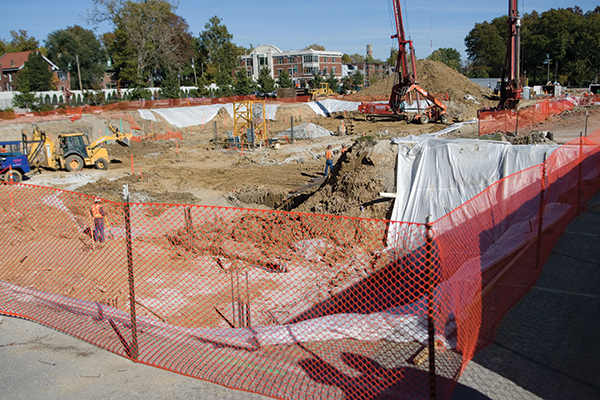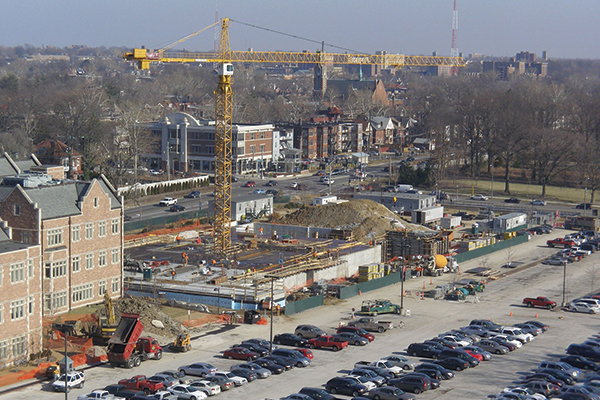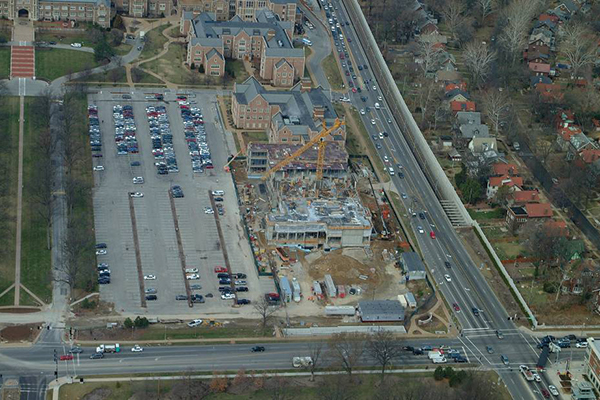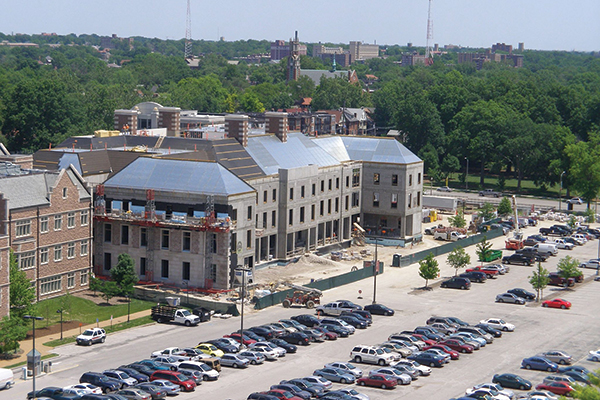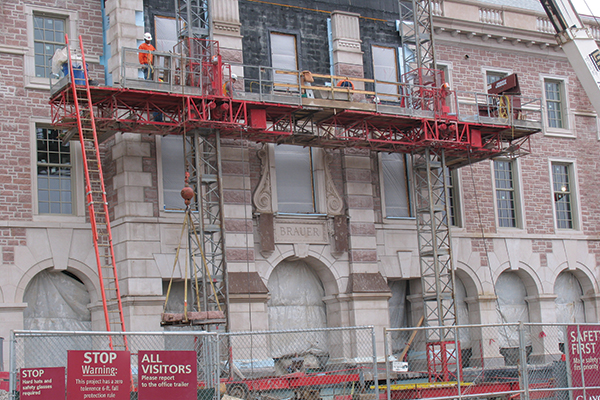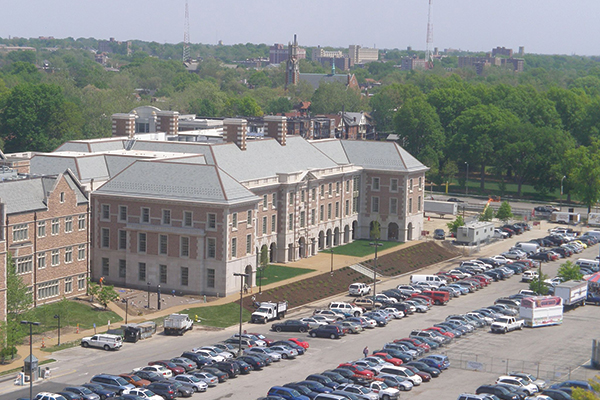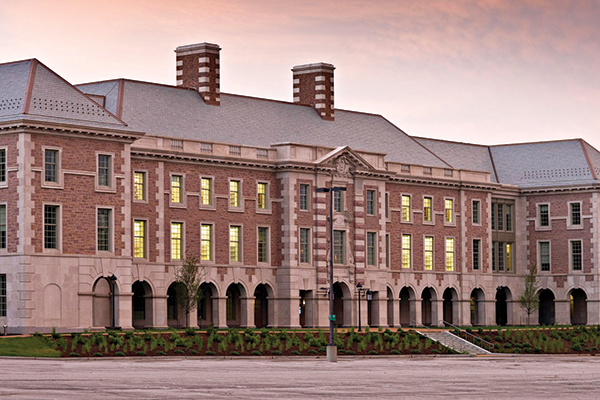Achieving more
What the gift of Brauer Hall has done in five years
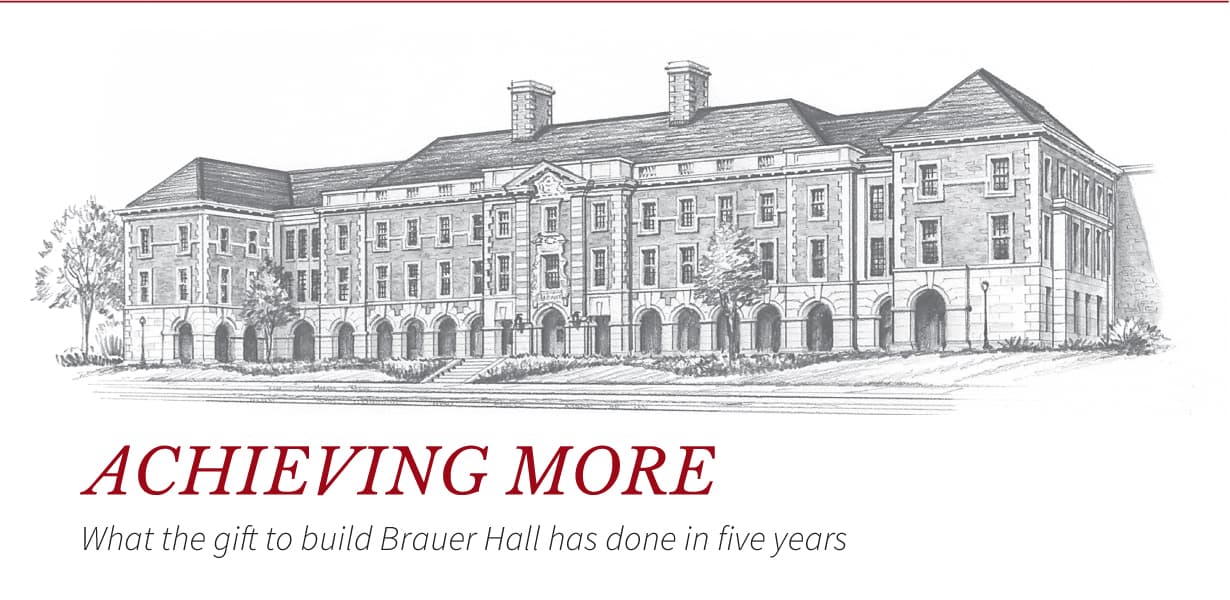
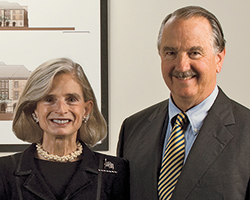 In 2008, Stephen F. and Camilla T. Brauer made a generous commitment to the School of Engineering & Applied Science to build a second building in the then-new Engineering complex on the northeast corner of the Danforth Campus. The 150,875 square-foot, three-story building was dedicated Oct. 1, 2010, as the Stephen F. and Camilla T. Brauer Hall, housing the Department of Energy, Environmental & Chemical Engineering (EECE) and part of the Department of Biomedical Engineering (BME). Stephen Brauer is president of Hunter Engineering. His involvement with Washington University began in 1987 when he joined Engineering’s National Council. He was elected to the university’s Board of Trustees in 1991 and is currently vice chair. Camilla Brauer is a cultural and civic leader and community volunteer.
In 2008, Stephen F. and Camilla T. Brauer made a generous commitment to the School of Engineering & Applied Science to build a second building in the then-new Engineering complex on the northeast corner of the Danforth Campus. The 150,875 square-foot, three-story building was dedicated Oct. 1, 2010, as the Stephen F. and Camilla T. Brauer Hall, housing the Department of Energy, Environmental & Chemical Engineering (EECE) and part of the Department of Biomedical Engineering (BME). Stephen Brauer is president of Hunter Engineering. His involvement with Washington University began in 1987 when he joined Engineering’s National Council. He was elected to the university’s Board of Trustees in 1991 and is currently vice chair. Camilla Brauer is a cultural and civic leader and community volunteer.
With more space and state-of-the-art research facilities, Brauer Hall has changed the way some are able to do their research.
Daniel E. Giammar, PhD, the Walter E. Browne Professor of Environmental Engineering, previously had an office in Cupples II and a lab in the basement of Urbauer Hall.
“Brauer Hall is a beautiful space, and there is enough of it to do everything we want,” Giammar says. “The biggest benefits have been the proximity issues — my students and I are now separated by a 10-second walk. I’m in touch with them better because I’m close to the lab and to them. The other thing that’s great is that my lab is between John Fortner’s lab and Young-Shin Jun’s lab. Our students are interacting more and are aware of what’s going on in the other labs, and that’s been a big benefit.”
Young-Shin Jun, PhD, associate professor of environmental engineering, had one lab in Urbauer Hall and one in Sever Hall, so her students had to move their samples from lab to lab.
“I cannot say enough about Brauer Hall and how it helps us achieve more,” she says. Our department is growing really fast, and having one building to host all of our faculty, collaborate together and see each other, is the most visible outcome that we have since we built Brauer Hall.”
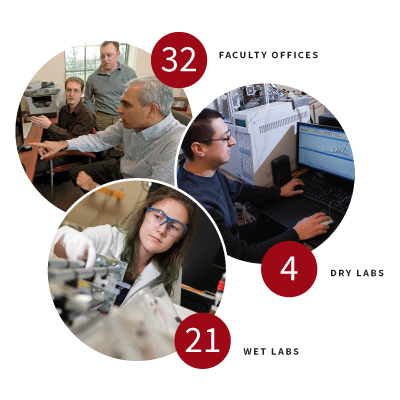 Brauer Hall was designed to be 21 percent more efficient than a standard building. Five years after its dedication, the building remains a living laboratory, complete with 9.8-watt solar panels to generate a portion of the building’s energy; a highly reflective roof to minimize heat gain; recycled blue jeans used as insulation; restroom fixtures that use 30 percent less water than a standard building; and occupancy sensors, dimmable ballasts and control systems throughout the building that allow for reduced lighting costs.
Brauer Hall was designed to be 21 percent more efficient than a standard building. Five years after its dedication, the building remains a living laboratory, complete with 9.8-watt solar panels to generate a portion of the building’s energy; a highly reflective roof to minimize heat gain; recycled blue jeans used as insulation; restroom fixtures that use 30 percent less water than a standard building; and occupancy sensors, dimmable ballasts and control systems throughout the building that allow for reduced lighting costs.
In November 2012, then sophomore chemical engineering major Elizabeth Mohr, who earned a bachelor’s degree in applied science in 2015, was the impetus for getting a charging station for electric vehicles installed outside of Brauer Hall. Last year, the charging station became even more efficient after the installation of a solar canopy over the two parking spaces that use the charging station.
Giammar said the labs are an excellent recruiting tool for faculty and students. “Our labs look better than almost any environmental engineering programs in the country,” he says.
Some students who have gone on to become faculty:
- Yandi Hu, PhD, assistant professor at the University of Houston, from Young-Shin Jun’s lab.
- Jose Cerrato, PhD, assistant professor at the University of New Mexico, from Daniel Giammar’s lab.
- Yin Wang, PhD, assistant professor at the University of Milwaukee, from Daniel Giammar’s lab.
- Abhas Singh, PhD, assistant professor at the Indian Institute of Technology Kanpur, from Daniel Giammar’s lab.
- Kanhcan Garai, PhD, was a research assistant professor in Rohit Pappu’s lab, is an assistant professor at the Tata Institute for Fundamental Research in Hyderabad, India.
Some students who have gone on to further research or education:
- Jessica Ray, PhD, who worked in the lab of Young-Shin Jun, PhD, while earning a doctorate in environmental engineering, is a postdoctoral researcher at the University of California, Berkeley on a three-year Miller Research Fellowship. She is the first engineer to be chosen for the Miller Fellowship.
- Albert Mao, who worked in the lab of Rohit Pappu, PhD, while earning an MD/PhD, is in a research residency and fellowship at Beth Israel Hospital and Harvard Medical School in Boston.
Some students working in government, education and industry:
- Melissa Holtmeyer, PhD, who worked in the lab of Pratim Biswas, PhD, is a U.S. Department of Defense Energy Policy Fellow working in the office of U.S. Sen. Bernie Sanders (D-Vt.)
- Scott Crick, PhD, who worked in the lab of Rohit Pappu, PhD, while earning a doctorate in biomedical engineering, is a licensing associate in WashU’s Office of Technology Management.
- Nicholas Lyle, PhD, who worked in the lab of Rohit Pappu, PhD, while earning a doctorate in computational engineering, is a senior software engineer at Partek Inc. in Chesterfield, Mo.
- Anuradha Mittal, PhD, was a postdoctoral researcher in the lab of Rohit Pappu, PhD, and is now a research scientist at University of California, San Francisco’s Oakland Children’s Research Hospital.
- Rahul Das, PhD, was a postdoctoral researcher and research scientists in Rohit Pappu’s lab. He joined the Rothberg Institute as a bioinformatics scientist and is a senior research fellow at Yale University.

